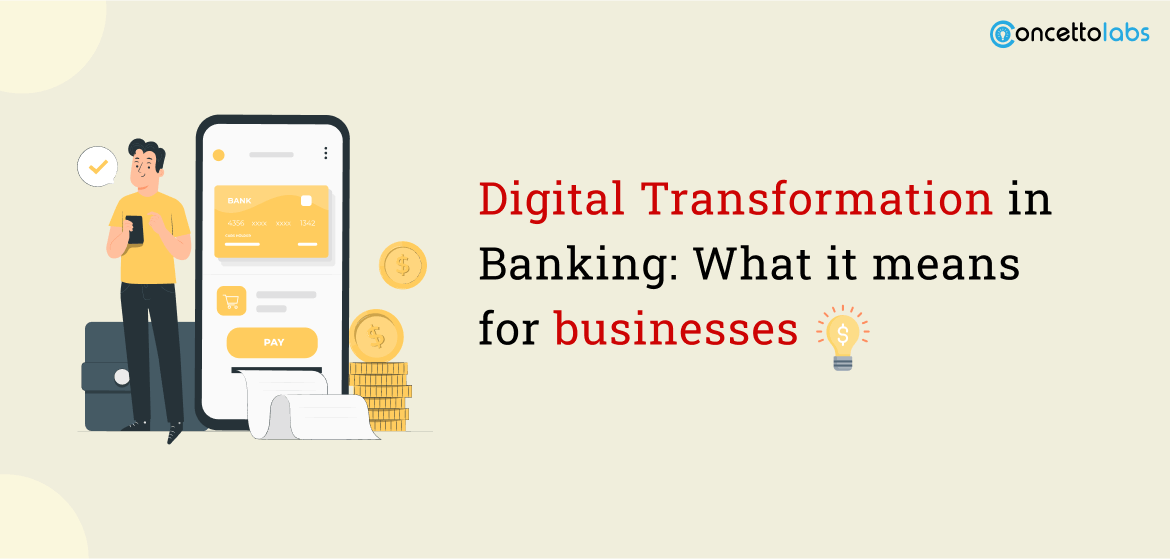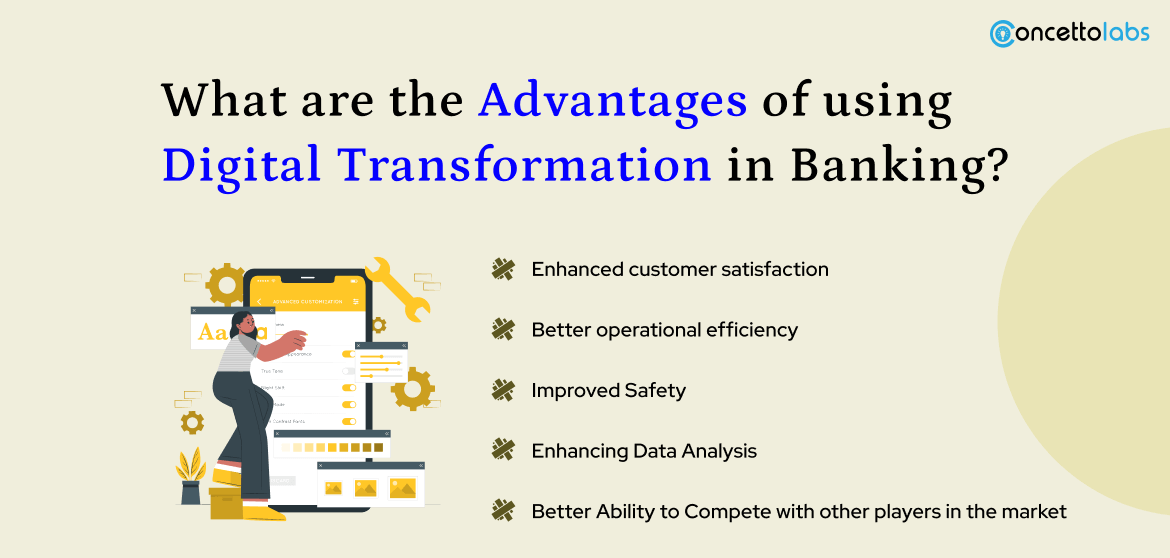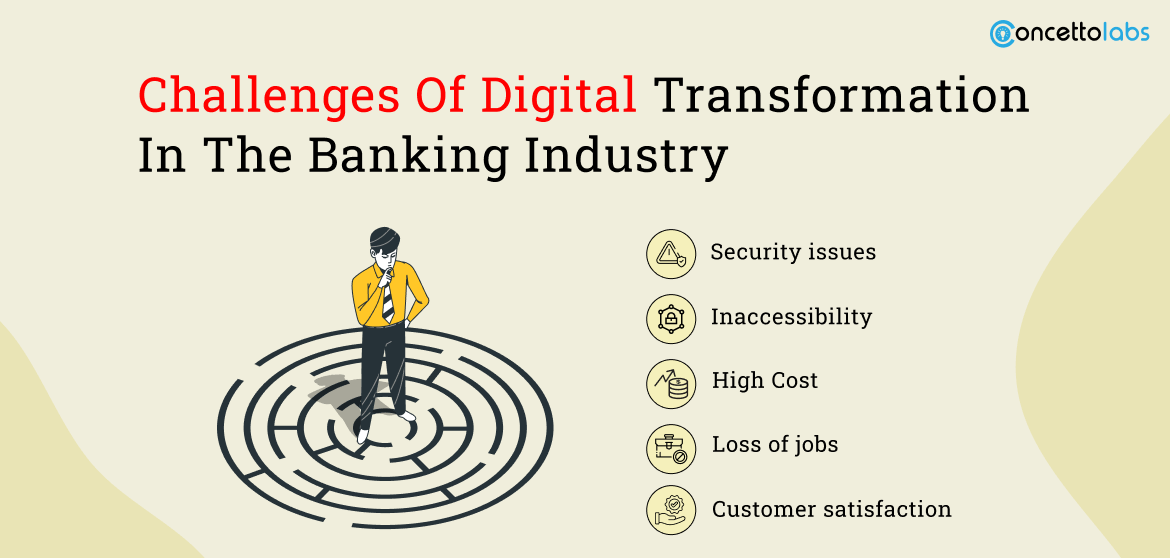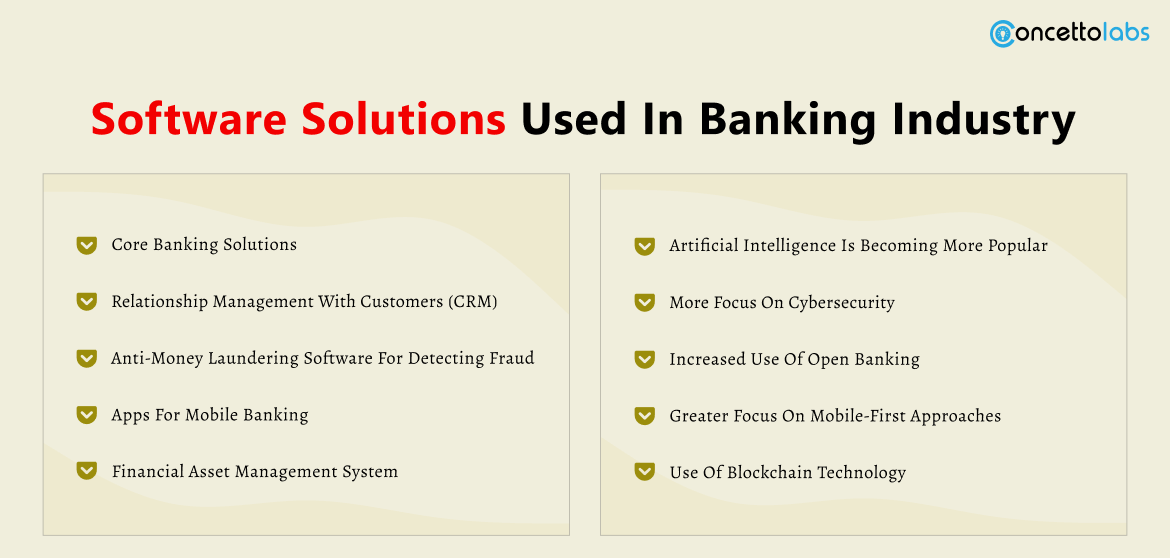
The banking industry, like many others, is trying to update its practices and use digital tools more. This complicated combination of procedures needs a cautious and considered approach, particularly in financial services, which deals with large sums of money and considerable risks. Let’s examine this procedure in detail to see why a banking strategy for digital transformation is crucial to its implementation.
What is Digital Transformation in Banking?
A digital transformation in banking involves implementing technological changes across all levels of the institution’s culture, administration, and daily operations. At its core, digital transformation is the move toward providing internet-based digital customer service.
An organization’s offers, process automation, customer experience, data integration, organizational adaptability, and sales performance are a few areas that may benefit from a digital transformation.
Because of this technological shift, banks must include technological developments in their plans. The pandemic problem has further heightened the importance of this. Sixty-nine percent of boards of directors surveyed by Gartner said that the global pandemic and economic crisis prompted them to speed up their digital efforts.
What are the Advantages of using Digital Transformation in Banking?

The banking sector has benefited greatly from digital change. Several positive outcomes result from the introduction of digital transformation in the banking industry:
1. Enhanced Customer Satisfaction
Banks may now offer their consumers more flexible and individualized services thanks to digitalization. The convenience of ATMs, smartphone applications, and the internet has allowed customers to do banking transactions at their convenience (ATMs). This has boosted the convenience and accessibility of financial services for customers.
2. Better Operational Efficiency
Banks’ operational efficiency has been boosted through digital transformation, which has automated mundane operations and streamlined procedures. Because of this, banks have been able to boost their profits and lower expenses.
3. Improved Safety
The rise of digital technology has also increased safety in the banking industry. Biometric authentication is one example of the cutting-edge security technology banks may utilize to keep their customers’ information safe and combat fraud.
4. Enhancing Data Analysis
The digital revolution has made it possible for financial institutions to gather and examine massive volumes of data, which has helped them gain vital insights into client habits, market tendencies, and internal processes. Due to this improvement, banks can now make more informed judgments and implement more efficient strategies.
5. Better Ability to Compete with other Players in the Market
Banks that have embraced digital transformation have a leg up on the competition. Even in a highly competitive industry, they can win over and keep consumers because of their cutting-edge offerings and focus on quality service.
Challenges of Digital Transformation in the Banking Industry

Although digital transformation in banking has the potential to bring about several positive outcomes, there are also negatives to think about:
1. Security Issues
Online and mobile platforms are commonplace in digital transformation, but this poses new security concerns. Financial institutions must invest in cybersecurity measures for their client’s privacy and financial security.
2. Inaccessibility
Some clients may need help to be able to use digital platforms or may feel uncomfortable doing so. If certain clients are left behind, it might mean losing money or expanding the digital divide.
3. High Cost
Investments in new tools, networks, and the education of existing workers are often necessary for a successful digital transformation. Banks need to weigh the advantages of digital transformation against the expenses.
4. Loss of Jobs
Some bank personnel may lose their jobs due to the transition to digital platforms and the automation of human-only processes. Banks should plan for the retraining or redeployment of impacted employees.
5. Customer Satisfaction
Although digital platforms have the potential to speed up processes and reduce wait times, they may need to give a different degree of customization and warmth than certain clients need. Using digital technologies effectively while still providing excellent customer service is a balancing act that banks must master.
Software Solutions Used in Banking Industry

Software solutions are important in the banking industry’s ongoing transformation and simplification. Some prevalent examples of software developed specifically for the banking sector include:
1. Core Banking Solutions
CBS is essential to contemporary banking since it serves as a centralized hub for all banking-related information, including but not limited to client records, financial transactions, and product offerings. Banks may save money and time with the assistance of CBS because it streamlines their day-to-day business management. Account and loan administration and payment processing are only some of the core functionalities covered by CBS’s suite of modules.
2. Relationship Management With Customers (CRM)
With customer relationship management software, banks may streamline customer care processes and provide individualized attention to their clientele. With this information, you may learn all there is to know about a client, from their likes and dislikes to their buying habits and more. Lead creation, client retention, and cross-selling are three more benefits that banks may get from CRM.
3. Anti-Money Laundering Software for Detecting Fraud
AML software aids financial institutions in their efforts to prevent and identify money laundering and other forms of fraud. Algorithms in AML software may detect and highlight suspicious behavior and outlier financial dealings. Compliance with regulations and avoiding reputational harm are aided by AML software for financial institutions.
4. Apps for Mobile Banking
Thanks to mobile banking applications, clients may now use their cell phones to conduct financial transactions. You may check your account balance, send and receive money, pay bills, and manage your finances, all from the convenience of your mobile device. Customers benefit from the convenience offered by mobile banking applications, while bank staff enjoy a decrease in workload
5. Trading Platforms
Customers may buy and sell stocks, bonds, and other assets using trading platforms, which provide them access to the financial markets. Real-time market data, analytics, and research tools are just some of the services offered by trading platforms. Banks may make money off trading platforms, too, thanks to the charges they charge their clients.
6. Financial Asset Management System
Banks may streamline their cash, liquidity, and risk management using treasury management software. Software designed for managing a company’s treasury may help employees keep track of cash flow in real-time, facilitate the effective pooling of funds, and streamline treasury processes.
Banking’s Digital Transformation: A Look Into the Future
The banking industry has been undergoing a digital transition for some years, and this trend is only anticipated to accelerate. Future digital transformation in banking is anticipated to be influenced by the following trends:
1. Artificial Intelligence is Becoming More Popular
Artificial intelligence (AI) is projected to play a larger role than ever in several banking areas, including customer service, fraud detection, and risk management. Voice-activated banking and chatbots are driven by artificial intelligence and play a major role in digital transformation for the banking industry.
2. More Focus on Cybersecurity
There will be a rise in the sophistication of cyberattacks against the financial sector as it moves increasingly into the digital realm. If financial institutions are serious about keeping their customers’ personal information and transactions safe, they must increase their cybersecurity spending.
3. Increased Use of Open Banking
“Open banking” refers to a regulatory system that permits financial institutions to exchange consumer information with non-affiliated companies. As open banking spreads, customers will have more options and easier access to banking services.
4. Greater Focus on Mobile-First Approaches
Banks will continue prioritizing mobile banking as more clients switch to that channel. Banking applications for mobile devices allow consumers to do various tasks, including monitoring their finances, transferring money between accounts, and paying bills.
5. Use of Blockchain Technology
As it serves as an immutable and verifiable record of all financial dealings, blockchain technology might radically alter the banking industry. Blockchain technology can speed up settlements while decreasing transaction costs and increasing security.

Want to leverage the power of digital technology in your banking business?
Get in touch with Concetto Labs for digital transformation services for the rapid growth of your banking business.
Contact Us Today!Wrapping it up!!
There is a major shift in the banking sector due to digital transformation, and it is changing the way banks do business and serve their clients. Artificial intelligence (AI), mobile banking applications, and the blockchain allow banks to provide clients with safer, more individualized, and more accessible financial services.
Businesses that work with banks may take advantage of this trend toward digitization by gaining easier access to banking services and more actionable insights from their data.
Companies may reap the advantages of digital transformation, but only if they stay abreast of technological developments and partner with reliable digital transformation agencies to provide clients with cutting-edge products and services that adapt to their ever-changing demands.
If you are looking for customized digital transformation services for your banking business, Concetto Labs can be your reliable Finance App Development Company. Concetto Labs has the right approach and resources to serve you, from designing a strategy to developing and integrating next-gen solutions. Call us now a
Frequently Asked Questions
Here are some frequently asked questions about employing our developers that may help you.









 Indonesia
Indonesia
 Botswana
Botswana
 USA
USA
 Italy
Italy
 Panama
Panama









 USA
USA UK
UK Saudi Arabia
Saudi Arabia Norway
Norway India
India Australia
Australia